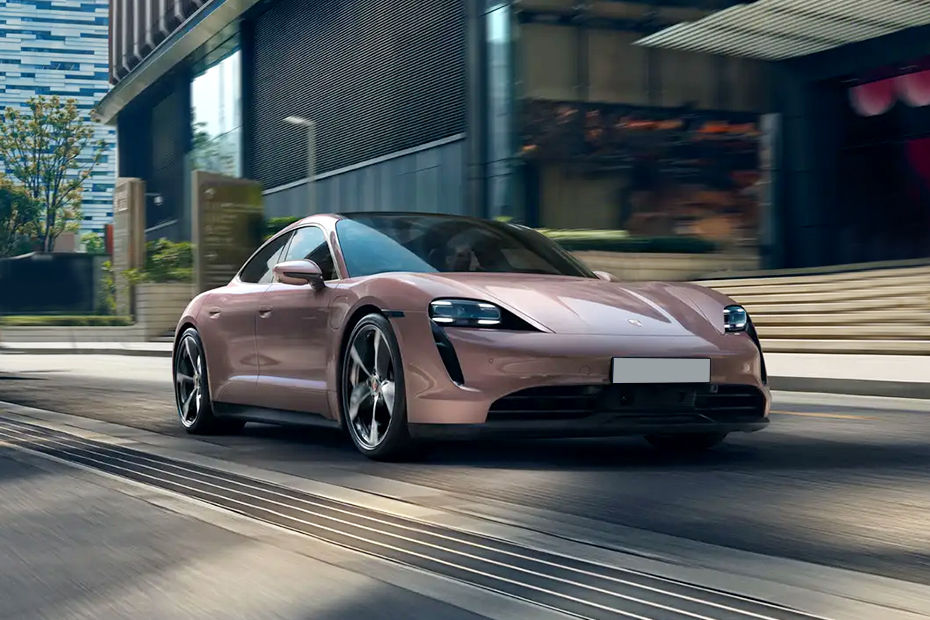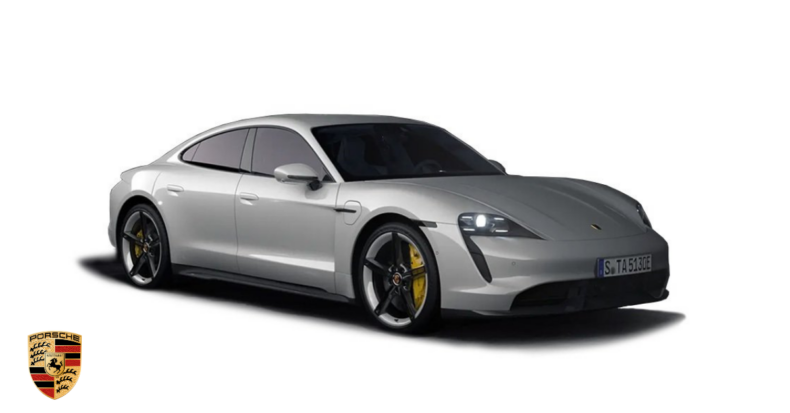The Taycan, Porsche’s first all-electric vehicle, arrives on our shores, and many got first look at it in success as the car is revealed in India.
Porsche has a long history of producing classic sports cars such as the 911. Still, its expansion into the passenger vehicle market resulted in SUVs such as the Cayenne and the Macan and 4-door sedans such as the Panamera.
The latter is significant since the Taycan might see as a continuation of that design motif into an all-electric performance car. However, it should note that the Taycan was designed from the ground up as an electric vehicle and has no resemblance to the manufacturer’s present lineup of internal combustion vehicles.

Just in front of the car looks undoubtedly different from what we’re used to seeing from Porsche, with the firm making a marked departure from a recognizable face to this primary yet athletic-looking LED headlight cluster and a seamless transition from the bumper to the bonnet.
Read More: Porsche is looking to buy half of Red Bull’s Formula One business
With the 4-door form, the sides have the most striking resemblance to the Panamera’s profile. Take note of the wheels, which appear conventional but are aero tuned with closed portions. The rear design language is unmistakably Porsche, as seen by the edge-to-edge tail lights.
There isn’t a new car for Porsche since, while being presented in India today, it was initially being unveiled as the Mission E concept in 2015 and then again in 2019 at the Frankfurt Motor Show in its complete production shape. The good news is that it doesn’t stray far from its original form, and it looks stunning in person.
If the appearance appears futuristic to you, the inside will familiarize you with the overall structure of the cabin and the materials used, but what will catch your attention are those screens that nearly make up the dashboard and centre console.
The removal of a sizeable analogue tacho in the instrumentation, like the exterior, is a significant break from Porsche’s design. Instead, you get broad, all-digital instrumentation that can be toggled for preset themes to display your desired readouts.
Then there’s the 10.9-inch infotainment screen in the centre, which controls most of the in-car features. Then there’s another screen for climate control, front and rear trunk opening controls, and an optional fourth screen that faces the front passenger and displays speed readouts, navigation, and other information. Like Porsches, these are abundant but yet practical.

Except for a few models, the back seat isn’t something you’d generally connect with a Porsche, but it’s a surprisingly comfy place to be. Most EVs have their batteries on the floor, which might reduce legroom in a sedan/saloon configuration, but Porsche has thought things through and designed a recess called foot garages to make things more pleasant for taller passengers.
It’s a little gimmicky and more of a marketing ploy because it’s merely a kink in the floor to modify the back passenger’s feet’ location slightly. This helps with under-thigh support but not enough to provide complete comfort, especially for taller riders. On the other hand, the shoulder and headroom are rather good given the Taycan’s sloping roofline.
The Taycan will offer a variety of body designs and variations, including the Cross Turismo line, which adds more fabulous baggage room and touring capabilities. There are two battery options: a regular single-deck 79.2kWh Performance Battery with the entry-level model and an optional two-deck 93.4kWh Performance Battery Plus.
Beyond the base model, the latter will be the typical choice for the majority of vehicles. Depending on the variation, power output ranges from 408bhp to 760bhp, with a stated driving range on a single charge of 484km for the entry-level model. Prices begin at Rs. 1.52cr.
Read More: Porsche to buy 50% stake of Red Bull
Read More: Top cars to be launched in 2024













